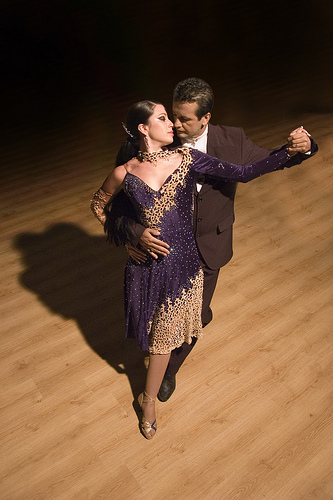Be part of our fantastic Tango break with the Argentinian Tango in Andalucia's most beautiful city which is Granada. This holiday is for all levels
9512 ATOL Protected
Seductive, passionate and sensual, the tempestuous tango from Argentina is an evocative dance with a distinctly Latin flavour.

Play the starring role in your very own Latin drama when you learn to Tango. A dance that foregrounds passion and fire, it encapsulates all aspects of the Latin-American spirit. The Tango is all about human contact – the relationship between the two partners, including how the dance plays out, is of the utmost importance. When performing The Tango, you should aim to have every eye in the room focused on you. If you’re holding your audience’s attention then you’re doing it right! Getting completely lost in the dance is key – so forget about work worries and simply immerse yourself in the movements of one of the most popular, highly regarded dances on the planet.
Originating in the 1890s on the border between Argentina and Uruguay, the dance has both European and African influences. In the early twentieth century, it was danced in lower-class districts of Buenos Aires and Montevideo after people saw it performed in theatres and in music halls. The craze then gained momentum in Paris, with London, Berlin and other capitals quickly following its lead. The word ‘Tango’ is thought to have first been used in the late nineteenth century as a reference to the dance with its roots in the Latin word ‘tangere’ (meaning to touch) and also the African word ‘tango’ (meaning drum or dance place).
From ‘Scent of a Woman’ to ‘Moulin Rouge’, the Tango has made countless memorable film appearances – which goes to show its timeless appeal. Bold movements, strong frames, close proximity of the bodies and eye contact are the key components of the dance. Although many different types now exist, the dance is always associated with romance – the visceral rhythm of the music is similar to the beat of the heart. The unity of the steps and the leaning torso represent the two bodies coming together and the Tango's frame – an abrazo – means hug in Spanish.
It is usually danced in a 2/4 or 4/4 rhythm and can be played on a solo guitar or in an ensemble. It can be purely instrumental or include a vocalist, depending on where you are in the world and which style you’re learning.
So whether you’re in Berlin, a Spanish bar or visiting Argentina, the home of Tango, follow in the footsteps of Al Pacino and Gabrielle Anwar. With a little help from the best teachers on the planet you’ll become Tango aficionados quicker than you can say ‘’Buenos Aires’’.
Be part of our fantastic Tango break with the Argentinian Tango in Andalucia's most beautiful city which is Granada. This holiday is for all levels

Be part of our fantastic Tango break with the Argentinian Tango in Andalucia's most beautiful city which is Granada. This holiday is for all levels
